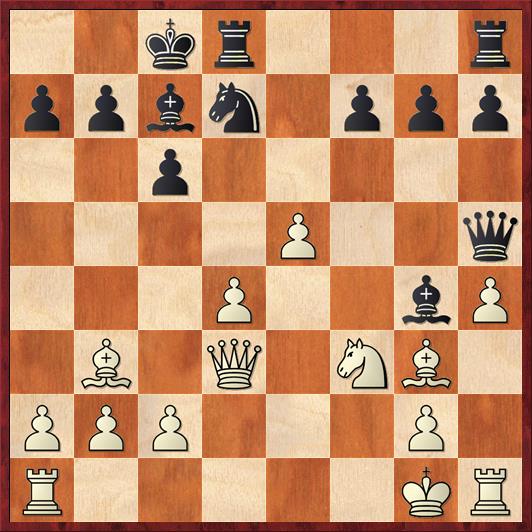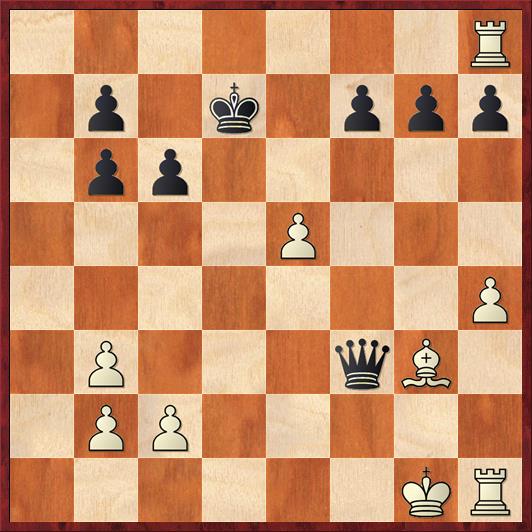Last Friday I got a really surprising message on Facebook. “Hi Dana!” it started. “I hope that everything is going well. I just moved to Santa Cruz…” and it was signed Steven Zierk.
My regular readers will remember that I just wrote a blog post about Steven a couple of weeks ago (The GM Factory Continues). Amazingly, when I wrote that post I had no idea that he was moving to town; in fact, I had not heard from him for several years.
Last night we met at a Starbucks and I caught up on his saga. He graduated from MIT in 2015, and especially for the last year he has been working hard on his chess, playing in about “8 to 10” norm-qualifying tournaments, including the one in North Carolina where he finally got his third and final GM norm. He has already satisfied the rating requirement, so it should be just a formality for him to get his GM title. In fact, the FIDE executive committee has a meeting this month and it should become official then.
Steven is thinking about going to graduate school in mathematics, but for now he wants to see how far his chess career takes him. For any of my readers in the Bay Area who might be looking for a grandmaster coach, he is definitely looking for coaching and teaching opportunities.
It’s funny how a GM title changes things. Even though Steven is one of the friendliest people around, I still wasn’t sure whether he would actually agree to play a few games of speed chess. I was afraid that maybe my offbeat and stupid opening repertoire would offend his sensibilities or mess up his much more important opening preparation. But he said, “Sure.” And even though I did play a few wretched games, we also had some good ones. Here is my favorite.
Black to move.
FEN:2kr3r/ppbn1ppp/2p5/4P2q/3P2bP/1B1Q1NB1/PPP3P1/R5KR b – – 0 1
I’m White, and this position came from a King’s Gambit. Steven’s approach was very instructive: not only did he return the gambit pawn, he gave up a second pawn in order to put more pressure on my position. And indeed, he has a lot of compensation: my center pawns at d4 and e5 are vulnerable and static; my king is exposed on g1, and my knight on f3 is also a target. It is wonderful to see how Steven weaves all of these ingredients together into a combination. A combination that is perhaps not completely sound, but definitely good enough for speed chess.
1. … Nc5!
I was more concerned about 1. … f6, but I think that Steven probably decided against it because of 2. ef Bxg3 3. fg with murky complications, where both sides have chances. Instead he plays a variation that keeps the initiative firmly in Black’s hands. As for me, I felt like the “NN” in all of those “Morphy vs. NN” or “Alekhine vs. NN” games. While Steven was looking 8 moves ahead, I was looking one move ahead.
2. Qe3 …
“So what’s the big deal?” I thought. “Black takes on b3 and then I get an open a-file. Seems all right to me.”
One of my big weaknesses in speed chess is that I don’t consider all of the possible in-between moves. Steven hits me with a couple of them here.
2. … Bxf3
Weakening the foundations of White’s pawn structure in the center.
3. gf …
I still felt okay. I had no idea what was going to happen. 3. dc might be a possible bail-out move, but Steven said he felt very good about Black’s position there. White’s pawn on e5 will come under intense pressure.
3. … Rxd4!?
Wonderfully played. You and I see a logjam on the a7-g1 diagonal. Steven sees a dynamic opportunity. He’s going to clear everything out of the way and skewer my king and queen. There’s only one slight flaw with this idea, but it’s a beautiful idea.
For a tournament game, this rook sacrifice is perhaps just a bit too romantic. (That’s why I’ve given it a question mark to go with the exclamation mark.) Black has a simpler way to get a clear advantage with 3. … Nxb3 4. ab Qg6 5. Kg2 (now if 5. Qf2? Rxd4! is stronger than in the game) 5. … Qxc2+ 6. Qf2 Qxf2+ 7. Bxf2 Bg6. Material is back to even, but White has all the weaknesses and Black has all the pressure.
However, in a 5-minute game, Steven’s romantic approach is easily good enough.
4. Qxd4 Nxb3 5. ab …
Worse is 5. Qg4+ Qxg4 6. fg Nxa1 7. c3, as Black has no problem extricating his knight after 7. … Rd8.
5. … Bb6 6. Qxb6 ab 7. Ra8+ …
This is the downside to Black’s plan. He has allowed White unnecessary counterplay. One skewer after another!
7. … Kd7 8. Rxh8 Qxf3
Position after 8. … Qxf3. White to play.
FEN:7R/1p1k1ppp/1pp5/4P3/7P/1P3qB1/1PP5/6KR w – – 0 8
This is an interesting position. I suspect that Steven probably got here in his analysis before move 1 and stopped, figuring that Black was winning or at least had all the practical chances. In fact, I felt the same way. My pieces are scattered and uncoordinated, and the queenside pawns look like easy pickings for his queen.
The computer is considerably more optimistic for White, and gives White a slight advantage all the way to the end of the game. And there is some reason for this: if White can avoid hanging a piece due to a fork (easy for a computer, harder for a human) and if White can manage to coordinate his rooks, then the very significant material advantage of 2R + B against a queen will start to exert an influence. Black may want to look for ways to escape with a perpetual check.
A line that exemplifies both of these themes is 9. Kh2, when 9. … Qe2+ 10. Kh3 Qxc2? is not so good after 11. Rf1! Now the rooks are starting to work together; if 11. … Ke7 12. Rb8 black is not able to hold the second rank. Instead, according to Rybka, after 9. Kh2 Black should head for an immediate draw with 9. … f5! 10. ef Qe2+ 11. Kh3 Qe6+.
Instead, the game continued 9. Bf2 Qg4+ 10. Kf1 Qd1+ 11. Kg2 Qxc2 12. Re1 c5 13. Rb8 Qxb3 14. Rxb7+ Ke6 and White lost on time.
In the final position I had time to figure out that Black is threatening both … Qd5+ and … Qxb2 but I did not have time to figure out what to do about it. In fact, 15. Kg1! defends both threats, because 15. … Qxb2 would be met by 16. Bxc5 and there are no forks. In fact, believe it or not, Rybka still thinks White has a half-pawn advantage in the final position, although I would be happy with a draw.
I did almost manage to win one speed game (out of 12, at least), a Scotch Game where I was Black and managed to get to an exchange-up endgame that we both agreed was a complete win for me. However, I couldn’t handle the time scramble. At one point I had 30 seconds left to Steven’s 10, and yet I lost on time a couple moves later. Maybe I missed the button on my clock? More likely I just had a brain freeze.
Anyway, I had a fun time and I would like to welcome Santa Cruz’s new grandmaster-in-residence.
For any readers who are wondering about USCF National Master Evan Sandberg’s quest to become a millionaire at the World Series of Poker, he’s still doing pretty well. He had a terrific day yesterday, amassing a stack of 1,106,000 chips, which put him in 142nd place (out of 310 remaining). Unfortunately, such is the nature of the World Series of Poker that you can have the best day of your life and still barely keep up with the opposition. He was just barely above the median of the remaining players, and the chip leaders had more than 5 million in their stacks. Nevertheless, I’ll keep you posted on his progress.





{ 1 comment… read it below or add one }
Unfortunately I have to report that Evan Sandberg went bust early in today’s action. He says, “Disappointed but I was playing for the win. I took some big risks at the end of yesterday and beginning of today and they didn’t work out. That’s poker :).”
All I can say is, good for you, Evan. If you’re going to play in the Main Event, then you’ve gotta play as if you mean it. (Says the person who has never played poker in his life.) And at least Evan gets to take home a nice consolation prize of more than $40,000.